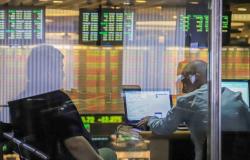For a couple of months now there has been talk of forced investments, in view of the bill proposed by the Government of President Gustavo Petro to reactivate the economy. Precisely, within the framework of the discussion, we spoke with Alexandra Restrepo, president of Finagro, who He said that these investments have been a great success for the fund, and that they hope that they will continue to contribute to the agricultural sector.
What is Finagro’s role in forced investments?
Finagro is a success story with these forced investments. These forced investments were created to stimulate investment in Colombian agriculture. Without these investments we would not have these results.
Finagro was created 34 years ago and these forced investments were created by a market failure. That is to say, the banks had to be encouraged and look at the Colombian countryside because what would we do without our food on the table, or if it were too expensive and we could not have access to it. Forced investments are resources that the private banks give us, the gross required amount being $25.4 billion.
What function do TDAs serve?
Of these banks, from this required gross amount, the banks have established TDA, Agricultural Development Titlesbut those TDAs are managed by Finagro and returned with resources in rediscounts for financial intermediaries.
What impact have these investments had?
The important thing about the impact of forced investments is that we have reached, in this millennium, that is, since 2000, to have 2.3 million producers, That is an excellent, astronomical figure. If forced investments did not exist, we would not have that impact in the Colombian countryside.
In Asobancaria it was said that these investments are a form of financial repression. Have you talked to them about it?
Indeed, within the framework of Asobancaria, we were there participating and well, I saw that what you are telling me was mentioned there, but our figures are not idle, our resources are placed in the agroindustrial sector. Finagro provides throughout the production, transformation, marketing and other support chainWe can reach rural tourism, we can reach rural housing, and the resources that we have are the minimum required by law.
What impact have they had during this Government?
At Finagro, this year we have managed to impact 924,000 operations worth $53.3 billion in this government period. So, we are increasingly including more people, more peasants, more farmers, more producers in the agricultural sector, with new credit operations.
What is Finagro’s balance sheet so far in 2024?
Finagro currently has a placement from January to May of $16 billion. This represents an increase of 71% compared to the placements of the previous year, and we have 157% executed according to GDP, our goal, and 53% additional to the goal set for us by the National Agricultural Credit Commission. So, well, it is a very positive balance, I believe that this is due to the democratization of credit that has been carried out in the regions.
What projections do you have for the end of the year?
As an indicative plan, the National Credit Commission gives us a target between $24 billion and $26 billion.. I want to keep the $26 billion budget for this year.
We are at 154% compliance this year. So, I think that the momentum we have been carrying out this year has been great. We are only in May and we have executed $16.4 billion. I would think that we would reach a goal of between $28 billion and $30 billion, given the momentum that is being carried out.






